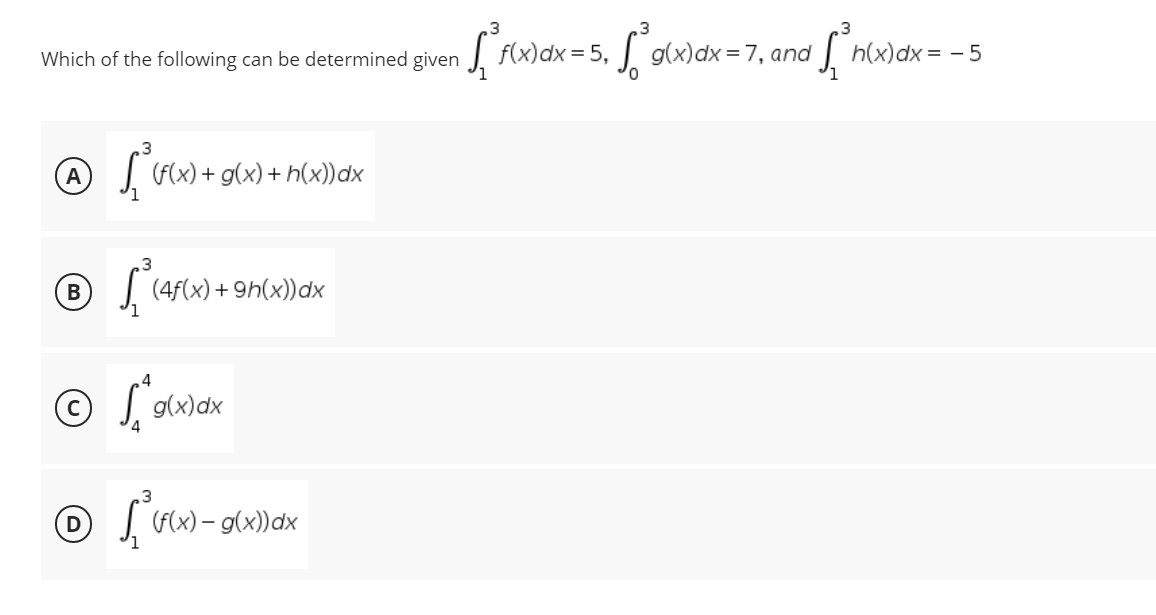for Which of the following can be determined given S √₁² f(x)dx = 5,³ g(x) dx = 7, and d Ⓒ [[²(f(x) + g(x) + n(x)) dx ® [² (4f(x) + 9h(x)) dx B © g(x)dx Ⓒ (f(x) = g(x)) dx h(x) dx = -5
for Which of the following can be determined given S √₁² f(x)dx = 5,³ g(x) dx = 7, and d Ⓒ [[²(f(x) + g(x) + n(x)) dx ® [² (4f(x) + 9h(x)) dx B © g(x)dx Ⓒ (f(x) = g(x)) dx h(x) dx = -5
Algebra & Trigonometry with Analytic Geometry
13th Edition
ISBN:9781133382119
Author:Swokowski
Publisher:Swokowski
Chapter5: Inverse, Exponential, And Logarithmic Functions
Section5.4: Logarithmic Functions
Problem 44E
Related questions
Question

Transcribed Image Text:Which of the following can be determined given
® √² (f(x) + g(x
(f(x) + g(x) +h(x)) dx
B
© √g(x) dx
3
Ⓒ [²³(f(x) = g(x) dx
[²² (4f(x) +9h(x)) dx
[₁² f(x)dx=5₁ [²³9(x
5,
3
ifºn
g(x) dx = 7, and
h(x) dx = -5
Expert Solution
This question has been solved!
Explore an expertly crafted, step-by-step solution for a thorough understanding of key concepts.
Step by step
Solved in 3 steps with 2 images

Recommended textbooks for you

Algebra & Trigonometry with Analytic Geometry
Algebra
ISBN:
9781133382119
Author:
Swokowski
Publisher:
Cengage

Algebra & Trigonometry with Analytic Geometry
Algebra
ISBN:
9781133382119
Author:
Swokowski
Publisher:
Cengage